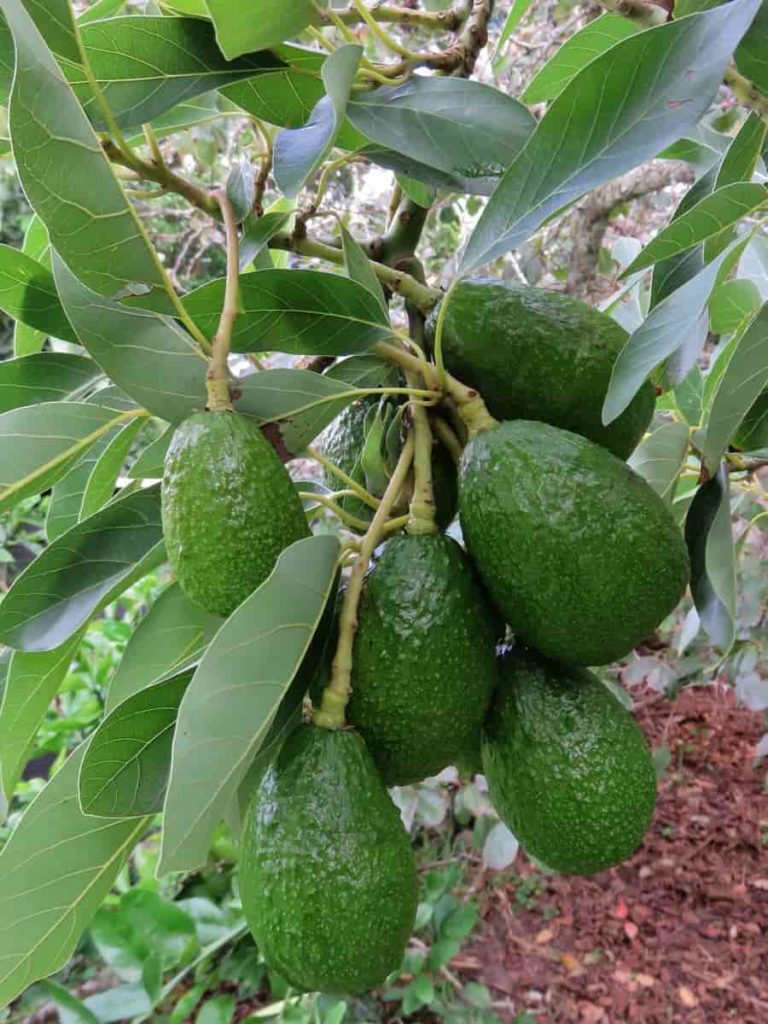The growing Avocado plant can benefit those with the patience to take care of them for months during the growing period. Like all other plants, Avocado plants suffer from many problems. The most common problems growing Avocado plants are nutritional imbalances and environmental factors such as temperature or sunlight intake.
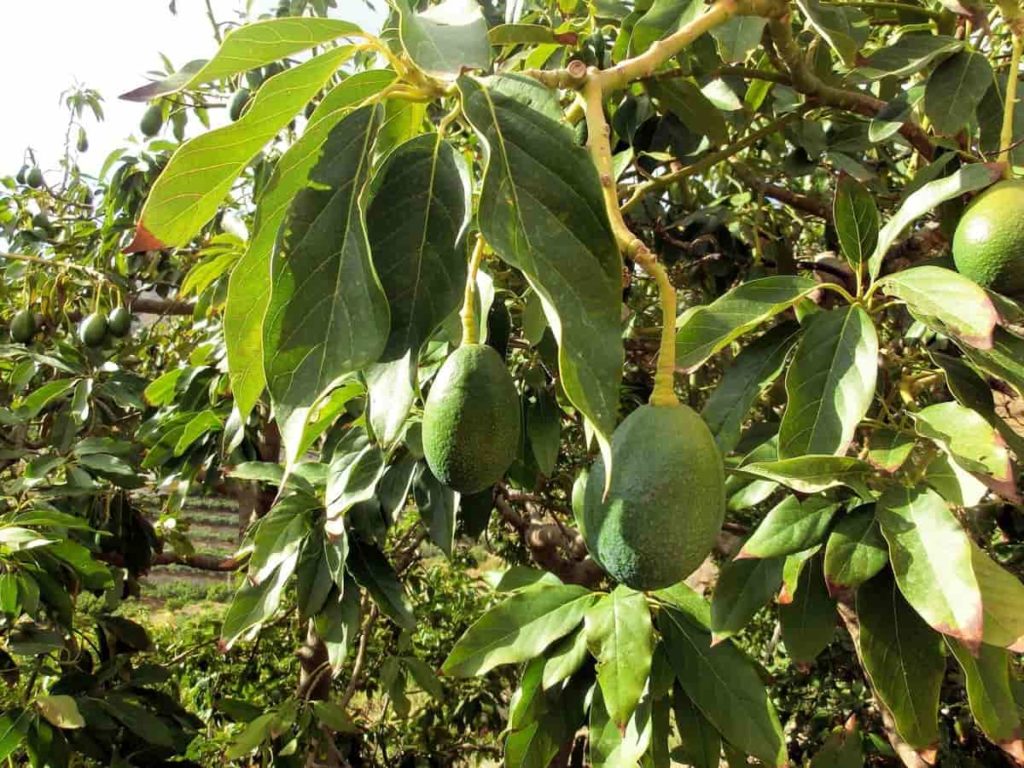
Avocado plants are also affected by diseases and pests. You should know how to maintain a healthy Avocado tree until it reaches maturity and the best way to do so is to understand the types of problems that can occur. Let’s check out the common Avocado tree problems below.
Common Avocado tree problems
The Avocado plant dropping leaves
The possible reason the Avocado plant loses leaves is because of overwater. Avocado plants don’t like wet feet, so although they prefer wet soil, the roots should not sit in standing water.
Solution – Make sure the Avocado plant has drainage, and don’t let your plant sit in the water. Symptoms of overwatering your Avocado tree are a mushy plant stem and an overall weak and scraggly tree.
Avocado leaves curling
Avocado leaves can curl for various reasons. The two most common reasons are overwater or leafrollers.
Over watering
There is a delicate balance between giving overwatering to an Avocado plant and underwatering and controlling the amount of water you provide in the first year of growth before the roots fully take hold. Once start taking root, you’ll give them a little more water.
Solution – Hold back the water until the soil level dries up. It is important to keep your plant happy and healthy. If you have problems with leaf curling, put the plant back into fresh soil to make room for drying around the roots.
Caterpillars
Insects usually eat Avocado leaves, resulting in tissue damage as well. Fortunately, the damage caused by the leafrollers is minor. However, if there is an attack of leafrollers and nests at the Avocado plant, it will create a major defoliation problem.
Solution – You can pick and keep them in soapy water. If there are large numbers of leafrollers, your next best option is to use chemicals to eliminate them from the plant. As long as you continue monitoring your plant for these insects, there should be no future problems.
Avocado leaves turn purple
If you see your plant leaves getting purple, the problem is most likely related to phosphorus deficiency. It is often more common in small plants as they produce and spend the most energy. Phosphorus is essential to generate the energy they need.
Solution – To help your plant become healthy and green again, you’d provide better soil for the crop. Avocado plant roots need certain conditions to get the nutrients they need.
In case you missed it: Best Fertilizer for Avocado: Homemade, Organic, Natural, Liquid, Compost Manure, NPK, and Schedule
Leggy Avocado plant
One of the best things about growing Avocados is that you can grow them indoors and outdoors. Indoors, they make for fabulous houseplants with their thick and lush leaves and charming flowers. But there is a strange problem with the indoor Avocado you don’t get from trees growing outdoors. That is, the plant tends to be leggy.
Solution – If the Avocado is already spindly, it’s likely not getting enough pruning. This pruning encourages new growth, and branches emerge next spring. Trim the top leaves during the early stages of tree growth to make the canopy bushy. Very soon, you’ll have an Avocado tree with a complex structure.
No blooms on Avocado
Generally, the young Avocado tree used to take 4 to 5 years to produce flowers. If your tree is still young, give it time because there is nothing you can do to speed up the process. Then check the temperature and sunlight and make sure they are enough. Nitrogen-high fertilizer can stimulate leaf and branch growth but no blooms.
Solution – Do not over-prune the tree. It can eliminate the bud-carrying branches and impede the flowering capacities of the tree. Limit your harvest to removing dead, damaged, or diseased branches. If the tree doesn’t bloom, try cutting the roots on dormant days. Trim the root tips and do not cut the main root ball.
No fruits
The problem with flower shortage is when Avocado will not carry fruit. The first reason is the age of the tree. There are two ways to start an Avocado tree. The first is from seeds which take up to 7 years for the tree to bloom and fruit to come. The second method is grafted trees that usually require about four years to mature enough for flowers and fruits.
Solution – Wait for the tree to reach maturity. Although the tree has both male and female flowers, pollination can be a complex problem, and you should plant a variety of Avocados nearby to promote pollination. Drought affects the production of flowers and fruits. Keep the tree hydrated during the growing seasons. Avoid using high nitrogen fertilizers.
Avocado leaves turn yellow
Sunburn
The Avocado plant may not be your best option if you live in an area with intensely warm summers. If the sun is too hot, it will bleach the leaves and become sunburned. As a result, they will be yellow leaves.
Solution – Keep in mind that your plant will need proper access to indirect light throughout the day. Light helps your plant build a strong, complex root system for further development. All this depends on the growth phase.
In case you missed it: Avocado Growing Tips, Ideas, Secrets, and Techniques
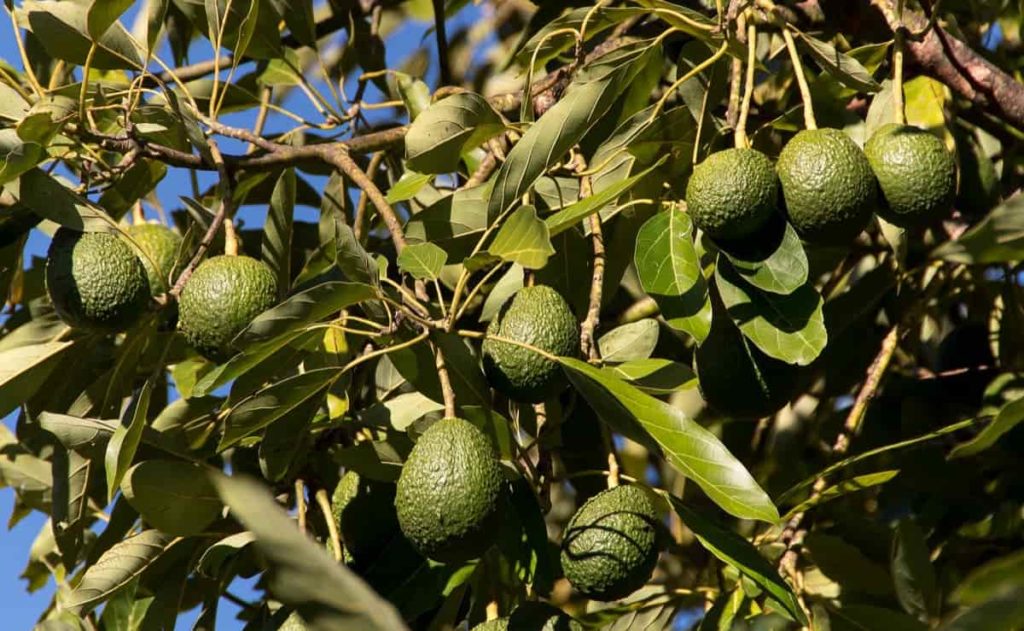
Pests
One of the biggest reasons for changing the color of your Avocado plants is pests, such as Avocado mites, which feed along the leaf surface. Mites start feeding, and they will then continue to veins and distances as they will continue to cover the entire leaf. The yellow areas will develop at the level where they have fed.
Solution – Applying insecticide saplings to remove annoying mites. Some gardeners recommend sulfur oil emulsion spray to make the best impact.
Avocado leaves turn brown
Brown leaves are usually the result of salt being built in soil. Excess salt in the soil will dry the Avocado plant, which will then start destroying the tissue and drying the leaves. Excessive consumption of fertilizer is a common reason for excess salt build-up.
Solution – You should start watering your Avocado plant. You can control the amount of fertilizer used for your plant and see if there is any improvement.
The Avocado plant is dying
Under-watering
Avocado tree leaves can bend quickly, brown, and fall if not correctly irrigated.
Solution – Water Avocado trees only when the topsoil is 2 to 4 inches dry, as a common rule. To promote water retention and prevent evaporation from the soil, apply 2 inches of compost and mulch. Usually, water Avocado trees every 1 to 2 weeks. Although it may seem like inadequate water, compost and mulch, especially in dry places, will help keep moisture in the soil.
Not enough humidity
It would be better if you tried to maximize humidity to maintain leaves in good shape, and the best way is to use a humidifier.
Solution – Grow your Avocado tree in a humid greenhouse or seal it inside a large clean plastic bag during autumn and winter for ideal growth. Even if humidity increases, the injured leaves will not be green again. Yet fresh leaves will not be brown. In other words, not much humidity repairs brown leaves; it only protects them from further damage.
The Avocado plant died due to sunburn
Avocados thrive directly in sunlight, but since their roots are very close to the surface, they can be sunburned.
Solution – Consider taking steps to keep them cool on the hottest days, such as shade covers. Paint the stem and large limbs white to preserve the delicate bark.
Fertilize your Avocado plant properly
Fertilizer is essential for Avocado plants as it compensates for soil nutrient deficiency. Solution – Organic fertilizers are coffee, banana, potato shells, eggshell, fish emulsion, etc. Avocado trees respond well to fertilizers with a ratio of NPK (nitrogen, phosphorus, and potassium). High-quality nutrients of compost benefit trees and beneficial soil organisms.
In case you missed it: Growing Avocado in Containers/Indoors – a Full Guide
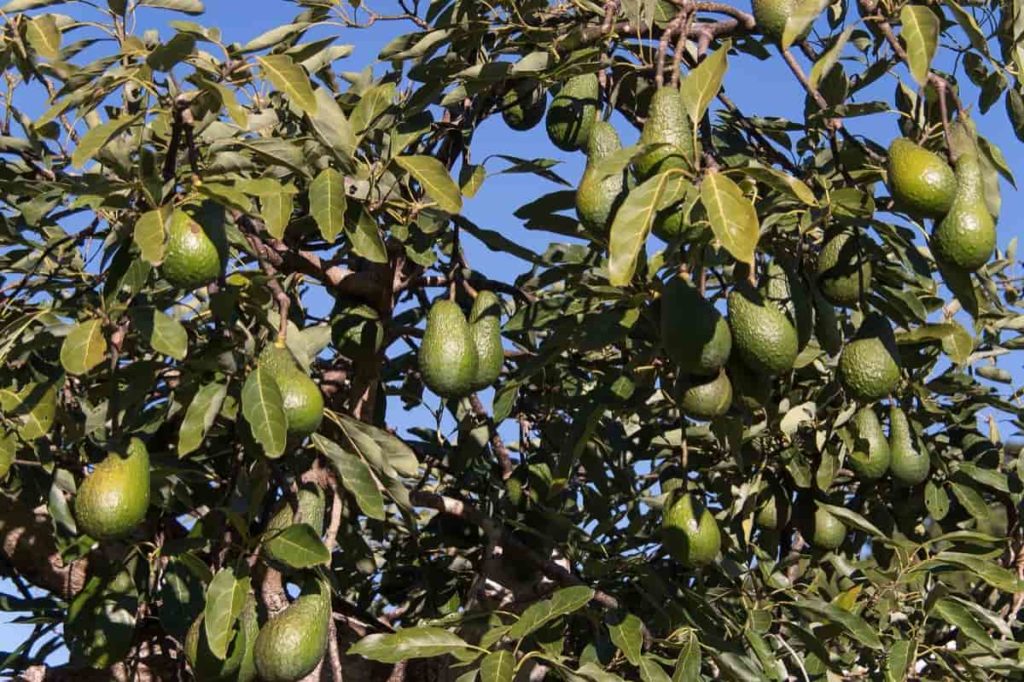
Avocado leaves turn black
Fungal disease
The biggest cause of black leaves is a fungal disease. Three common fungal diseases can produce black leaves: Avocado root rot, anthracnose, and algal leaf spot.
Solution – All three fungal diseases begin with yellowing the leaves, then turning black. The best way is to keep the soil moist but not saturated or overwatered.
Chloride salts
Avocado trees are much more sensitive to salts, especially sodium and chloride, than other plants. The resulting leaf tips appear burnt if your plant is exposed to excessive amounts of these salts.
Solution – This problem can only be solved by the amount and type of water you use. You can use filtered water as it contains quite a few salts. You can sprinkle lime or gypsum over the ground and use the same water, which will work as a cleaner for extra salts.
Avocado fruit drop
You will see a thin line on the walnut-sized fruit where it was attached to the branch. All this means that the tree naturally forced the small fruits off its back for no other reason than to lighten the load. But sometimes, the measured Avocado fruits fell for other reasons such as stress and insects. It calls for immediate action from you to save the Avocado crop.
Solution – There may be tension behind the fruit when it keeps falling from the Avocado tree. The tree gets stressed when it is not getting enough water or the soil does not contain enough nutrients and the fertilizer you provide is not enough. Start by regularly watering the Avocado tree and providing one to 2 inches of water every week, including rain. Once the flowers fade, you can return to feed the tree with a balanced fertilizer with a proper nitrogen concentration. Side dress with organic compost and aged manure to feed the tree well.
Diseases
Cankers
Cankers are usually only minor diseases of the Avocado tree, but they are very much visible. These wounds on the trunks and branches of trees can sink slightly, causing the sore to appear in a rusty form.
Solution – You can often remove cankers from limbs, but cankers in the trunks often kill infected trees.
Fruit rot
Fruit rot is usually caused by poor sanitation and high tree stressors. These fungi can be in plant debris on the ground around the tree or in fruits that remain on the tree after the Avocado harvest in winter.
Solution – Proper harvesting and immediate removal of fruits will help prevent disease.
Root rot
Root rot is usually manifested in poor drainage areas or chronically over-watered trees.
Solution – The tree can be saved if the conditions can be improved. Sometimes, digging around the tree and exposing the roots will dry the crown enough to prevent the tree’s death.
In case you missed it: Avocado Seed Germination, Time, Temperature, Process
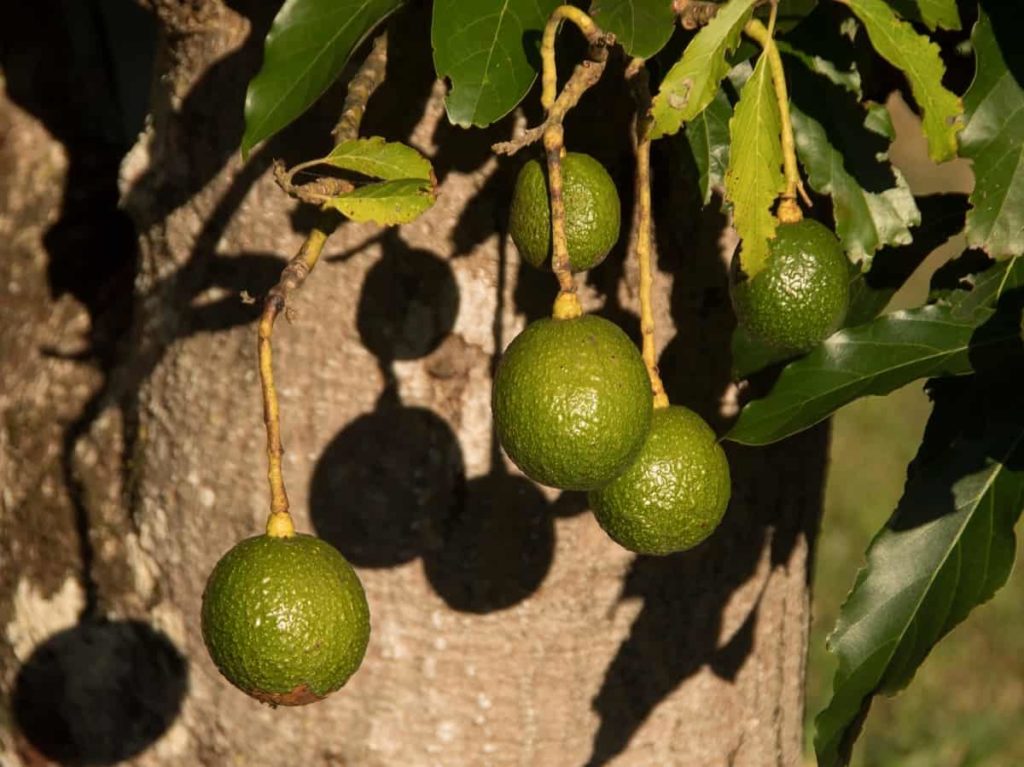
Wilt and blight
Trees have dead areas due to wilting and blight, especially when only a portion of the tree is affected. Wilting causes sudden wilt and death in the branches. Blight can kill small branches or affect only the leaves themselves.
Solution – Pruning the tissues from trees and providing good help can help your Avocado recover.
Pests
Borers
The borers tunnel into Avocado trees, where they feed or lay eggs. Internal holes are visible, juices can leak, and bored weak branches can easily break.
Solution – The borers prefer the stressed trees; keeping their tree healthy can prevent infection. Cut down the affected branches and dispose of them immediately.
Caterpillars
The caterpillars attack leaves, flowers, and fruits and can cause considerable damage in a short time.
Solution – Bacillus thuringiensis sprays are highly effective, provided you can reach the caterpillars, such as leafrollers, which feed inside a protective nest made of leaves.
Lace bugs
Intermittent pests of Avocado and lace bugs damage leaves when present. The feeding places cause yellow spots that soon dry out, and the stressed leaves will fall, exposing fruit and wood to ultraviolet rays.
Solution – When symptoms appear, horticultural oil or pyrethrin spray is recommended to treat the Avocado tree.
Mites
Mites cause the same damage as lace bugs, but leaves can also take bronze form, making it difficult to see pests with the naked eye. Some mites rotate fine webs like spiders.
Solution – Treat them with horticultural oil; pesticides can cause population explosions.
In case you missed it: Types of Insect Pests in Your Garden: Control Methods, Solutions, and Treatment
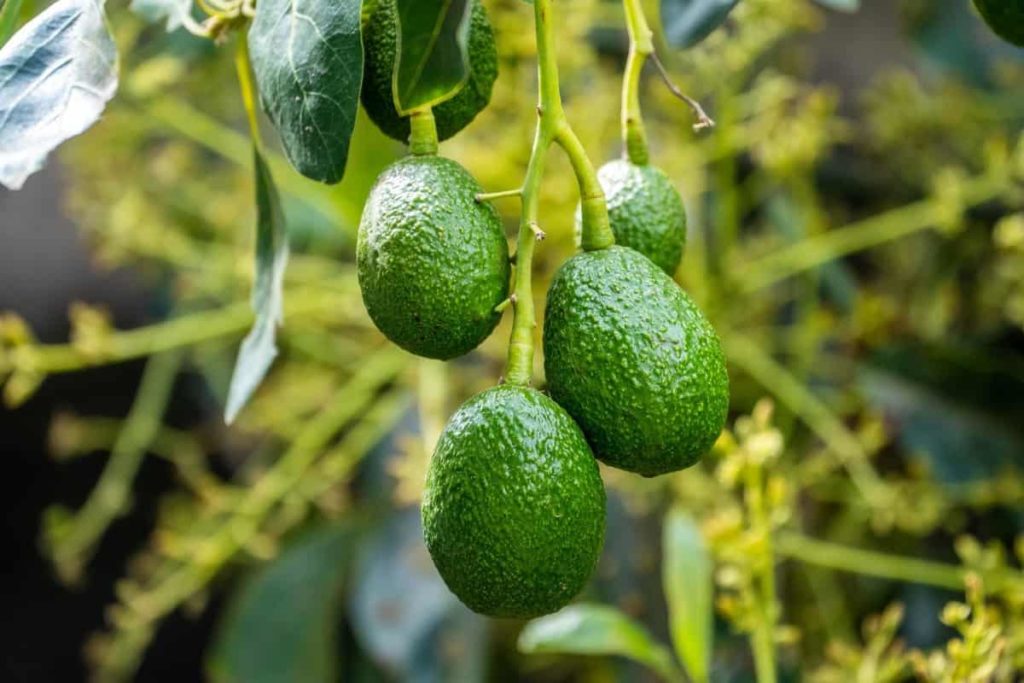
Thrips
Thrips cause very little severe damage to trees but will seriously scar fruits. Brown scars of scabby or leathery appear as the fruits grow, sometimes stunting fruits.
Solution – Careful harvesting and fertilizing will help prevent thrips attracted to the tender flushes of development. The problem is resolved by horticultural oil or pyrethrin.
Conclusion
While some Avocado-growing problems are easily avoidable, others will happen even if you fix everything near the tree. But in most cases, you can solve these issues by taking the right steps or taking precautionary measures to prevent them from taking an advance.
Because of the work and time involved in growing a healthy tree, it is important to find warning signs of problems affecting your Avocado tree and know how to solve them for the sake of your future crop. With some minor adjustments in planting and taking care of your tree, it will start to flourish, and soon you will enjoy thick delicious Avocados.
- Flower Garden Designs and Layouts for Beginners
- Planting and Spacing Techniques in Papaya: A Beginner’s Guide
- Growing Gold: Essential Techniques for Planting Pineapples
- How to Make Kalanchoe Plant Bushy: Home Remedies and Solutions
- 11 Reasons Why Your Gardenia is Not Blooming: Home Remedies and Solutions
- Eco Elegance: The Guide to Designing a Drought-Tolerant Landscape
- Gardening on a Slope: Strategies for Hillside Landscaping
- Nourish and Flourish: Top Organic Mulches for Thriving House Plants
- Everything You Want to Know about Indian Mogra Flower: Discover Uses and Growing
- Green Thumb Success: Expert Tips for Cultivating Greenhouse Pumpkins All Year Round
- Maximize Growth & Flavor: The Ultimate Guide to Companion Planting in Herb Gardens
- How to Control Rhododendron Problems Naturally: Home Remedies and Organic Ways to Fix Them
- Natural Magic: The Remarkable Benefits of Cinnamon for Plants
- Best Steps to Revive Dying Tulip with Natural and Organic Treatment
- 10 Reasons Why Your Angel Trumpet is Not Blooming: Remedies and Treatment
- How to Fix Periwinkle Leaf and Flower-Related Problems: Natural Remedies and Solutions
- How to Fix Zinnias Leaf and Flower Problems: Discover Natural and Home Remedies
- Organic Steps to Induce Lemon Tree Flowers: A Comprehensive Guide
- Bloom Booster: Crafting the Perfect Homemade Bougainvillea Fertilizer
- Optimizing Growth: A Guide to Applying NPK Fertilizer for Potted Plants
- 10 Best Homemade Fertilizers for Rubber Plant: DIY Recipes and Application Method
- How to Boost Female Pumpkin Flowers: Effective Steps for More Flowers and High Yields
- Transform Your Indoor Garden: Top Benefits of Pink Salt for Houseplants
- 10 Best Homemade Fertilizers for Peacock Plants (Calathea): Easy DIY Guide
- Unlock Blooms: 9 Reasons Why Your Potted Chrysanthemum is Not Blooming
- 8 Reasons Why Your Potted Hibiscus is Not Blooming: Fix it with Simple Solutions
- Unlock Blooms: 9 Key Reasons Your Potted Frangipani Won’t Flower
- 10 Reasons Why Is My Ice Plant Not Blooming: Remedies and Treatment
- 10 Reasons Why My Potted Hydrangea Not Blooming: Treatment and Remedies
- 10 Reasons Why is My Wisteria Not Blooming: Remedies and Treatment
- 10 Reasons Why is My Goldfish Plant Not Blooming: Remedies and Treatment
- Maximize Your Space: Ultimate Guide to Balcony Gardening with Grow Bags
- 10 Reasons Why Your Iris is Not Blooming: Remedies and Treatment
- 10 Reasons Why Your Anthurium Plant is Not Blooming: Treatment and Remedies
- 10 Reasons Why Your Aquaponic Plants Are Not Flowering: Remedies and Treatment
- 10 Reasons Why Your Agapanthus is Not Flowering: Remedies and Treatment
